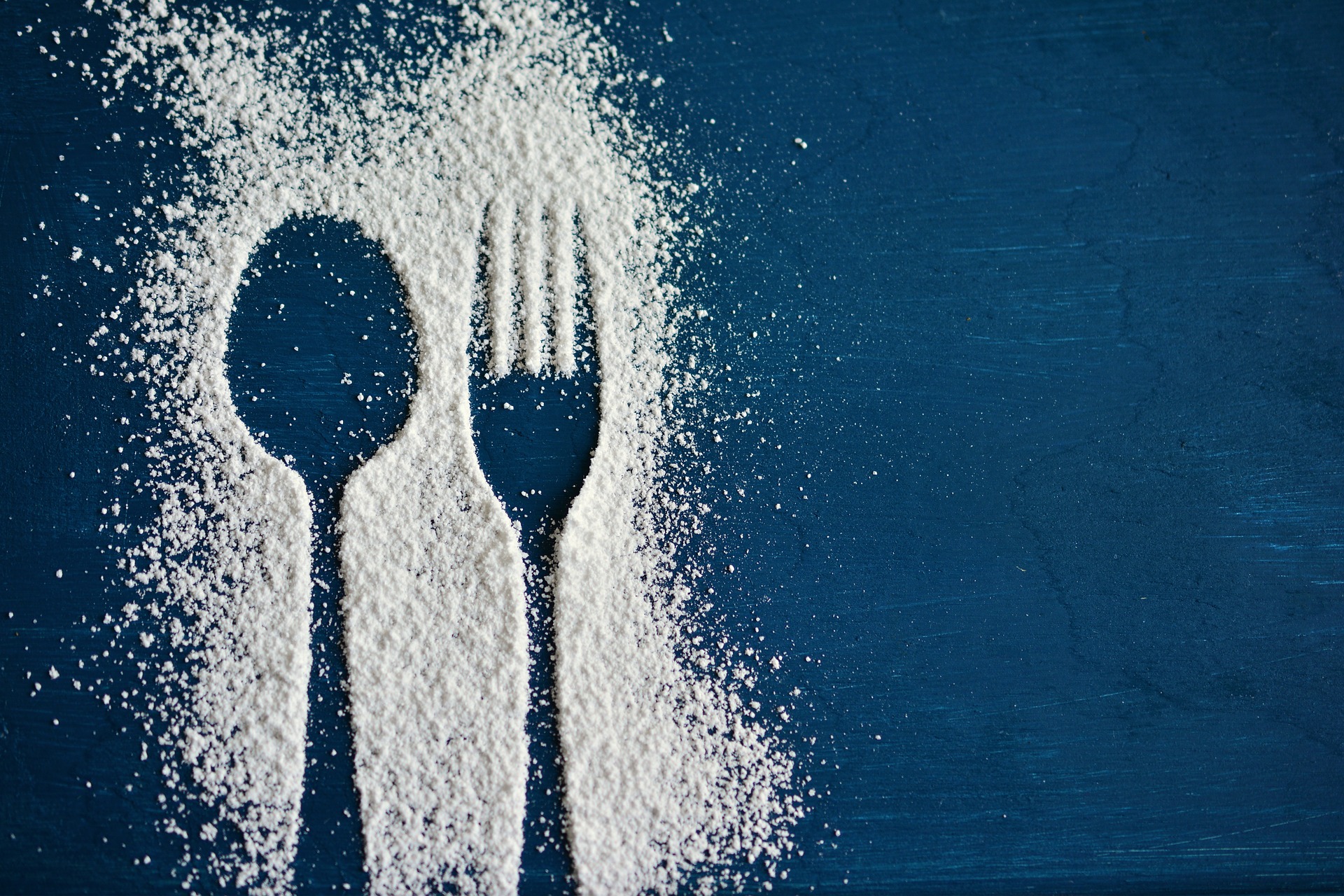Some simple facts about sugar:
It tastes good.
It is harmful to our health.
Americans eat too much of it.

No one needs a healthcare provider to give recommendations to cut back on sugary foods and beverages. We all know what we should do. But these are the questions that everyone really wants to know…
Is it okay to consume any sugar?
How much can we eat without detriment to our health?
Are some sugars better than others?
What are the health implications if we eat too much?
Are there different recommendations for kids than adults?
What numbers should I consider?
What should I look for on a food label and ingredient list?
In practice, I have been peppered with dozens of questions like these from my patients and clients. Today I want to arm you with knowledge and clear up confusion.
What Are the ACTUAL Recommendations for Sugar Consumption?
The American Heart Association has established the following recommendations for adults and children:
Women: 100 calories = 6 tsp sugar = 25 grams added sugar
Men: 150 calories = 9 tsp sugar = 36 grams added sugar
Children/Teens (2-18 yrs): 100 calories = 6tsp sugar = 25 grams added sugar *
Children Under 2 Years: 0 grams added sugar (avoid entirely)
*Additionally, the AHA recommends children (2-18yrs) limit sugar-sweetened beverages (soda, punch, sweet tea, fruit-flavored sports drinks, energy drinks) to no more than 8oz per week.
The Centers for Disease Control has made the following recommendations:
Americans should keep their total added sugar consumption to less than 10% of their total caloric intake.
Example following a 2000 calorie diet:
200 calories = 12 ½ tsp sugar = 50 grams sugar
The World Health Organization recommends the following:
“Adults and children reduce their daily intake of free sugars to less than 10% of their total energy intake. A further reduction to below 5% or roughly 25 grams (6 teaspoons) per day would provide additional health benefits.”

What is the Difference Between Added Sugars and Natural Sugars?
Added Sugars– Any sugars or caloric sweeteners that are added to food products. This includes adding sugar into a cup of coffee and products that have been sweetened during production.
Natural Sugars– These are naturally occurring in the food. For example, milk contains lactose, a milk sugar/carbohydrate, but no sugar is added to plain, white milk. However, the milk nutrition label will read 12 grams of sugar- this is entirely lactose. Fructose is a naturally occurring sugar in fruit, making it sweet to the taste!
How Do You Know if There is Added Sugar?
Reading the Nutrition Facts Label indicates whether the food has sugar (added or natural) but unfortunately, not until Summer 2018 will the label differentiate between the 2 types. Therefore, it is essential to read the ingredient list for sources of added sugars.
Don’t forget that ingredients are listed by order of weight from most to least. When sugar is close to the top of the ingredient list if not at the top of the list, it indicates that the product is composed of a significant amount of added sugar.
According to the Department of Health and Human Services, there are more than 20 names and types of added sugar that can be found in products on the supermarket shelves today! Here is a list to familiarize yourself with so that you can identify how your food is being sweetened:
- anhydrous dextrose
- brown sugar
- confectioner’s powdered sugar
- corn syrup
- corn syrup solids
- dextrose
- fructose
- high-fructose corn syrup (HFCS)
- honey
- invert sugar
- lactose
- malt syrup
- maltose
- maple syrup
- molasses
- nectars (e.g., peach nectar, pear nectar)
- pancake syrup
- raw sugar
- sucrose
- sugar
- white granulated sugar

Other Names Used for Added Sugar Not Recognized by the FDA
- cane juice
- evaporated corn sweetener
- crystal dextrose
- glucose
- liquid fructose
- sugar cane juice
- fruit nectar
But Wait, There’s More! Have You Ever Seen These in the Ingredients List?
- Brown rice syrup
- concentrated fruit juice
- corn sweetener
- diglycerides
- Disaccharides
- evaporated cane juice
- Erythritol
- Inversol
- isomalt
- Maltodextrin
- malted barley
- Malts
- Mannitol
- nectars
- sorbitol
- sorghum
- sucanat
- xylitol
What Do the Numbers Really Mean?
1 tsp of sugar = 4 grams of sugar
Here are a few examples:
Granola bar has 12 grams of sugar = 3 teaspoons of sugar
12oz can of Coke has 36 grams of sugar = 9 teaspoons of sugar
Snickers bar has 27 grams sugar = 6.75 teaspoons sugar
16oz Caramel Macchiato has 33 grams sugar = 8.25 teaspoons sugar
How Much Sugar Are Americans Really Consuming?
- According to research from 2005-2010, the average American was consuming about 66 pounds of sugar per year! That is about 19 ½ teaspoons per day.
- The Obesity Society shows that Americans have increased sugar consumption by 30% in the last 3 decades.
- Research shows that kids are eating about triple the recommended 6 teaspoons per day

What Is the Harm in Consuming Too Much Sugar?
- More sugar cravings…an endless cycle
- Elevated blood sugar- increases risk of diabetes
- Energy crashes- the sugar rollercoaster always dips low after eating highly sugary foods/beverages
- Weight gain- sugar has no nutritive value and is, therefore, a source of calories without any benefits
- Diabetes- makes it difficult to control blood sugar when eating highly sweetened foods and beverages
- Linked to Obesity, Type 2 Diabetes, Cardiovascular Disease
- Stimulates areas in the brain similarly to drugs
Research from this study in JAMA: Internal Medicine shows that individuals consuming 17-21% of their total daily calories from sugar had a 38% higher risk of mortality from Cardiovascular Disease.
There is simply no value in adding sugar to your diet.
Take-Away Message
Entirely removing sugar from your diet may seem overwhelming or ridiculous. It’s likely that you will consume some added sugar each day, whether added of your own doing or coming from a packaged product or restaurant food. However, added sugars have absolutely no nutritive value- they don’t improve or maintain your health in any way. In fact, sugar is harmful to your health, especially in excess.
Your body is able to break down healthy carbohydrates into usable forms of sugar very effectively. This is the perfect source of slow release energy that allows your body to thrive. Choosing to liberally allow added sugars in your diet greatly increases your risk of several types of diseases and daily cravings.
Begin by taking inventory of what you are buying, making, and adding on a regular basis. If you have an occasional dessert a few times per month, that is less likely to cause ‘harm’ than the food and beverages with added sugars that you are consuming regularly.
PART 2- SOURCES OF HIDDEN SUGARS IN YOUR DIET
Don’t miss Part 2 Next Monday, July 17, so that you can identify where sugar might be lurking in your cabinets and fridge. Let’s take some action!
SPECIAL NOTE
If you have diabetes or use Insulin, removing sources of added sugar from your diet can be quite beneficial, HOWEVER, this will also affect your glycemic control. Make sure to contact your Registered Dietitian Nutritionist, Diabetes Educator or Physician with any questions about managing or regulating your blood glucose/sugar and to address any necessary modification to insulin or medication dose. All changes should be addressed with your healthcare provider.
REFERENCES
- American Heart Association, http://www.heart.org/HEARTORG/HealthyLiving/HealthyEating/Nutrition/Sugar-101_UCM_306024_Article.jsp#.WWKepYjyu70; http://newsroom.heart.org/news/children-should-eat-less-than-25-grams-of-added-sugars-daily
- Centers for Disease Control, https://www.cdc.gov/nchs/data/databriefs/db122.pdf
- USDA, ChooseMyPlate, https://www.choosemyplate.gov/what-are-added-sugars
- World Health Organization, http://www.who.int/mediacentre/news/releases/2015/sugar-guideline/en/
- Yang Q, Zhang Z, Gregg EW, Flanders WD, Merritt R, Hu FB. Added Sugar Intake and Cardiovascular Diseases Mortality Among US Adults. JAMA Intern Med. 2014;174(4):516-524. doi:10.1001/jamainternmed.2013.13563

Thank you for an informative article on sugar! I’m eating way too much despite cutting out sugar in my coffee/tea.